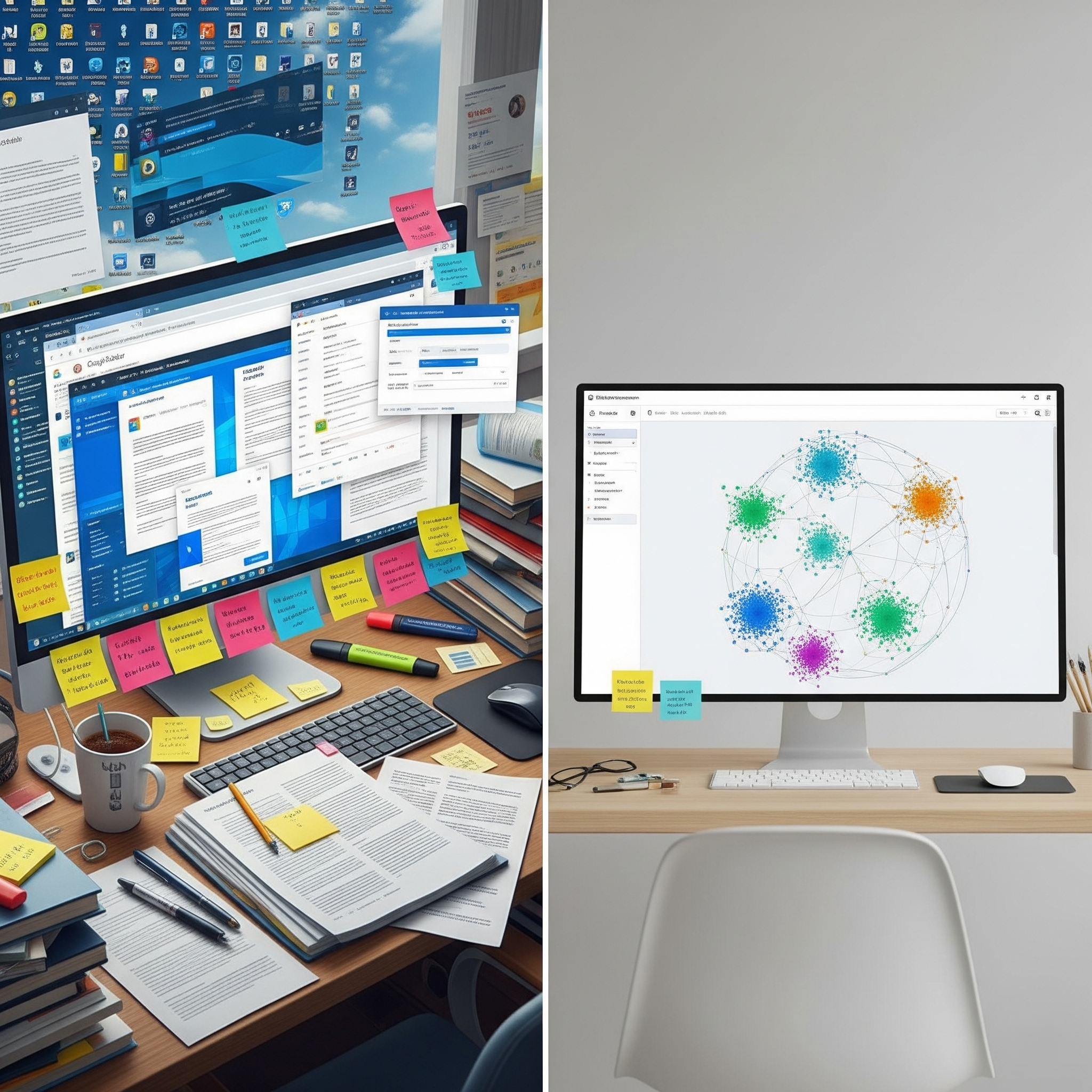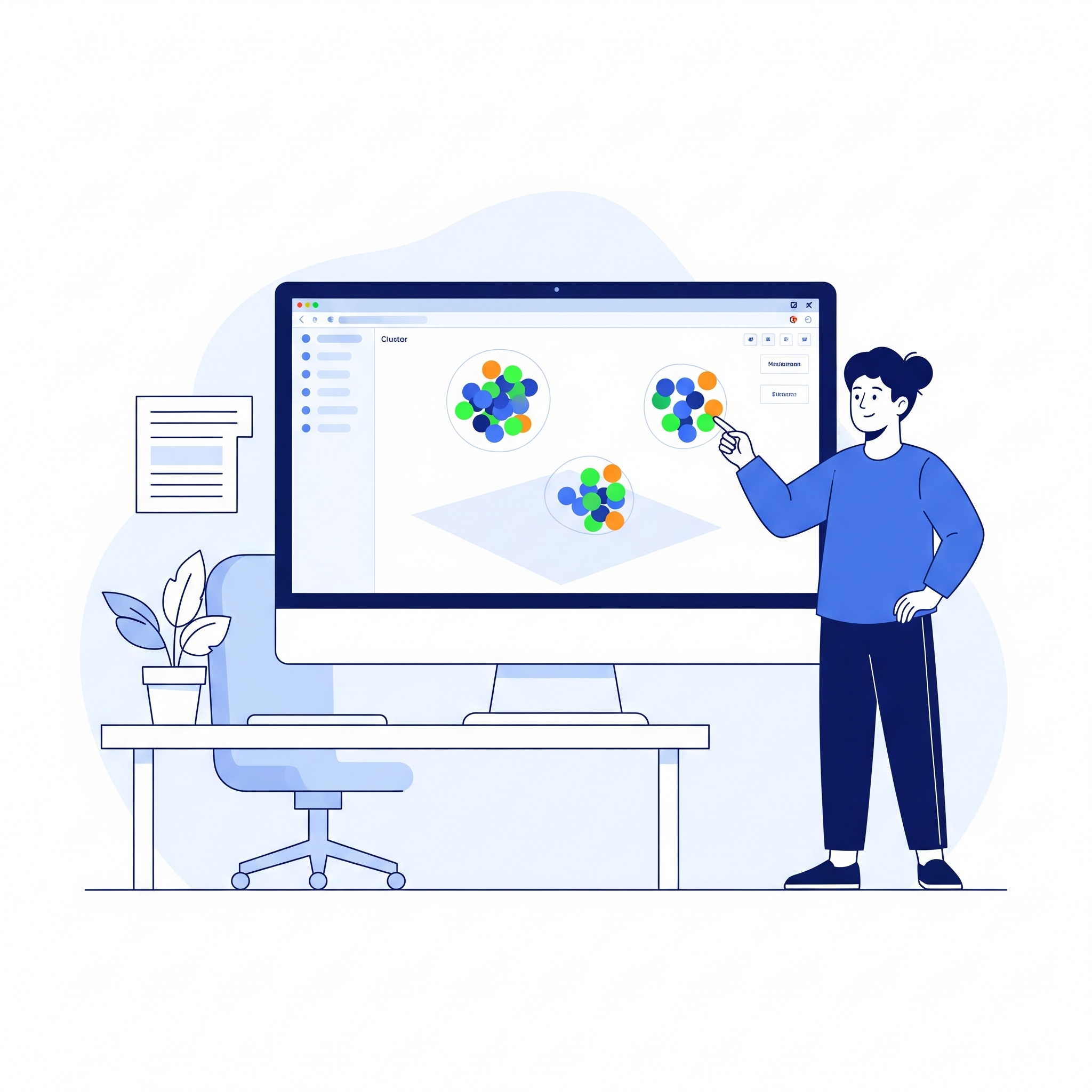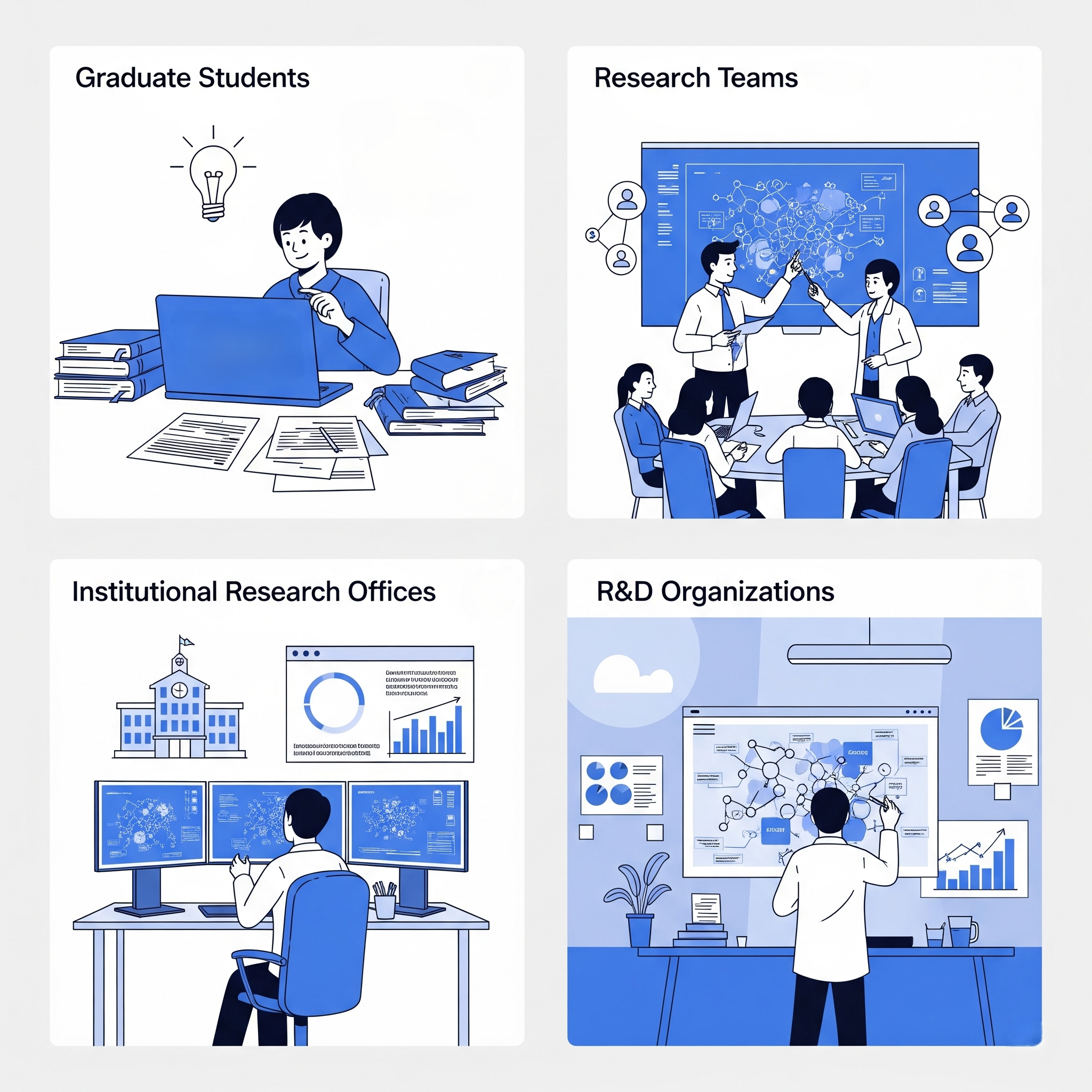Why LitView?
Today, researchers who need comprehensive literature discovery and analysis face two suboptimal options: adopt fragmented tools like Google Scholar + Zotero + manual organization, which are powerful but time-consuming to coordinate, or use basic keyword search platforms that lack semantic understanding and miss critical research connections.
LitView aims to be the best of both worlds, providing researchers with the comprehensiveness of traditional research workflows and the intelligence of AI-powered semantic clustering.
The Research Workflow Problem

LitView is a good fit for researchers who:
- Spend hours manually organizing literature across multiple disconnected tools
- Want to discover conceptual relationships between papers, not just keyword matches
- Need to identify research gaps and emerging trends in their field quickly
- Require real-time collaboration on literature review without complex file sharing
- Search across interdisciplinary topics and want to avoid missing relevant connections
- Trust proven research databases but want modern AI-powered discovery tools
How Current Solutions Fall Short

Traditional Research Tools
Platforms like Google Scholar, PubMed, and Web of Science excel at comprehensive coverage and established academic workflows. However, researchers using these tools face significant challenges:
- Manual Connection-Making: Users must identify relationships between papers themselves
- Tool Fragmentation: Literature search, reference management, and analysis happen in separate applications
- Limited Semantic Understanding: Keyword-based search misses conceptually related research
- Time-Intensive Organization: Building coherent research narratives requires extensive manual work
Modern Research Platforms
Newer tools like Consensus, Semantic Scholar, and ResearchGate offer improved discovery features but often sacrifice the comprehensive coverage and reliability that researchers depend on for rigorous academic work.
The LitView Advantage

LitView bridges this gap by combining:
Comprehensive Coverage
- Access to major research databases (PubMed, Google Scholar, institutional repositories)
- Integration with existing reference management workflows
- Support for uploaded documents and institutional knowledge bases
Semantic Intelligence
- AI-powered cluster visualization revealing conceptual relationships
- Discovery of research connections beyond keyword matching
- Trend identification and research gap analysis through cluster mapping
Research-Grade Reliability
- Built specifically for academic and R&D environments
- Designed for the rigor and documentation needs of institutional research
Use Cases Where LitView Excels

Literature Review Acceleration Transform weeks of manual paper organization into hours of intelligent discovery. LitView’s cluster visualization immediately reveals the conceptual landscape of your research area.
Interdisciplinary Research Discover connections between fields that traditional keyword search would miss. The semantic clustering reveals how concepts from different disciplines relate to your research.
Research Gap Identification Visual cluster analysis makes it easy to spot underexplored areas and emerging research opportunities that aren’t obvious from traditional literature searches.
Grant and Proposal Development Build comprehensive research foundations that demonstrate deep understanding of the field. Use cluster analysis to show how your proposed research fits within and advances current knowledge.
Who Benefits Most from LitView

Graduate Students and Early-Career Researchers
- Accelerate literature review learning curve
- Discover research connections that would take years to identify manually
- Build confidence in research comprehensiveness and strategy
Research Teams and Principal Investigators
- Coordinate team literature efforts with shared semantic understanding
- Identify collaboration opportunities through conceptual overlap analysis
- Make strategic research decisions based on landscape visualization
Institutional Research Offices
- Support researchers with advanced discovery tools
- Improve research quality and efficiency across departments
- Demonstrate institutional research capability and innovation
R&D Organizations
- Accelerate competitive intelligence and technology landscape analysis
- Improve research strategy through comprehensive field mapping
- Coordinate research efforts across teams and projects
Ready to experience the difference? Get started with LitView and see how semantic cluster analysis transforms your research workflow.